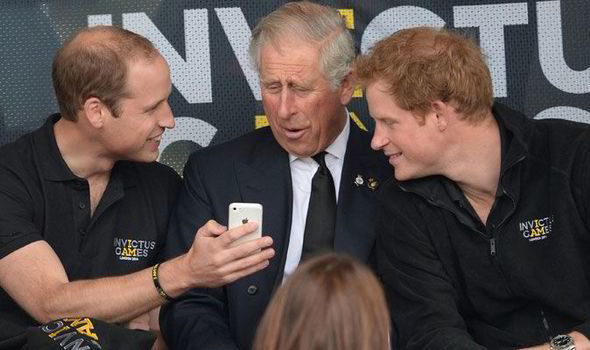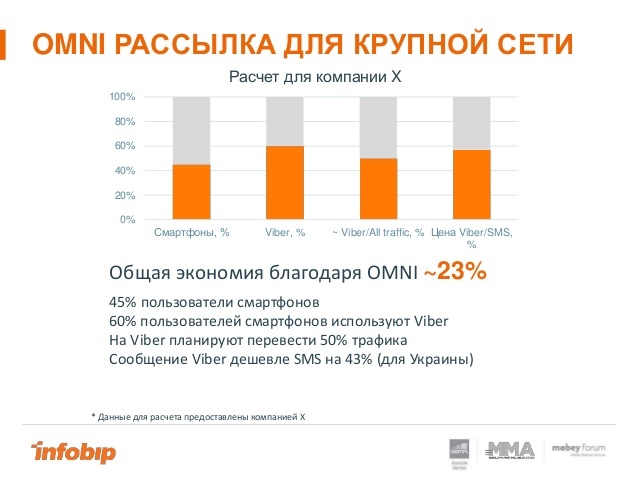Omni-channel: facilitating communication with customers and employees
Today, omnichannelism is a fairly popular topic among marketers. Especially in industries such as retail, banking, and others. It should be noted right away that this concept can mean slightly different things, for example, when we talk about trade or communication, but the essence is the same. Since our company is known in the market as a provider of communication solutions and platforms, in this publication we will talk about omnichannel communications .

If we discard all complex formulations, then explaining the essence of omnichannel communications is very simple - the user contacts you in a way that suits him. And this is the main advantage of omnichannel for marketing. It increases consumer loyalty to the brand and at the same time rationally uses the budget laid down for communication.
Another advantage of omnichannelism is the ability to manage all communication channels with a client from a single center. Thus, the efficiency of communication is increased, the big picture is better visible - the overall picture of the processes taking place.
The use of omnichannel communications is an opportunity to abandon the constant search for the most effective communication tool in each individual case. This decision is made by a customized platform with a fully integrated communications system. All of them, of course, must be managed from a single interface. Omnichannel marketing is built in accordance with the requirements of users and, at the same time, is based on technological innovation. Thus, previously disparate channels we can use as a single tool, respectively, the three main principles of omnichannelity - full coverage, single structure and interconnectedness.
Let's see how it looks in practice. We all remember that the focus is on the client, and marketing communications are built on his requirements, and it is he who sets the pace of communication. For example, a request for technical support can be sent via SMS (it was more convenient for the client), a more detailed dialogue takes place through an exchange of emails with a description of the details, then a telephone number is used to confirm, and finally the user switches back to SMS to participate in surveys. The client must understand that in any case, the company will find a way to contact him, will not “lose” him and the history of communication, will not shift the search for the most convenient channel to him.

In a client-oriented company, each client is at least a prince
Among companies that actively use omnichannel solutions, giants such as Disney and Bank of America. Disney uses absolutely all possible communication channels to make the customer experience easy, convenient, and enjoyable. Firstly, the company's website works equally well on any device, whether it be a desktop computer or a mobile phone. Secondly, a special application allows you to plan your trip to the amusement park to the smallest detail, right down to the choice of places where you stop for lunch. Thirdly, during a vacation in Disneyland, the company will tell you where the attractions you are interested in and how long you will have to wait in line for them.
As for Bank of America, this financial institution is known for implementing a variety of services so that their client can conduct the maximum number of transactions remotely, without worrying about the security of accounts.
For a company that has chosen to use modern omnichannel solutions, the issue of communication with a client is much easier. A single interface ensures the accessibility of all channels and the convenience of their use, as well as the reaction speed. We live in an era of radical transformation of communication as such. Social networks have made it possible to communicate online with companies and brands - now their representatives are always ready to answer customer questions, and smartphones allow such communication anytime, anywhere. You need to respond accordingly.
Now consumers are not just waiting for the reaction of companies and brands - they are waiting for it immediately.

In a customer-oriented company, there are always prompt answers
to all questions. According to the study.conducted by the Lithium Center, more than 40% of consumers expect to receive an answer to their question within an hour. And such an expectation forces companies to constantly monitor and respond to inquiries received through all channels. Users not only want to be answered quickly - they want to communicate in the most convenient way.
Omnichannel is not limited to messaging and offers a full cycle of marketing services for consumers. Take, for example, the travel industry. According to researchFacebook and Deloitte, most users use multiple devices (and often at the same time) when planning a trip. To maintain contact with the resort, airline, hotel, the user addresses the brand each time, and this means that communication should not only be uninterrupted, but also be supported by all devices and platforms. The above Disney example shows that such communication has already become the standard.
Let's look at the main channels of communication with the client. Note that each of them is important separately, but only together they provide an effective level of communication.
The first channel, from which most often the client begins acquaintance with your company, is the site . Everyone already knows that it should be convenient, simple, and informative. This channel is the basis for other communication channels. It forms the first impression of the brand and shows the client, both existing and potential, what are the ways to communicate with your company. A site on which information is insufficient or outdated, and the form of communication is missing or does not work is useless.
The second, no less important channel is email. With the development of technology, email has lost its importance as a way to quickly communicate. It, unlike instant messengers, is often checked only several times a day, but it is read thoughtfully and in a favorable setting for this. Newsletter is a way to remind about a brand, tell about news, announce discounts and events. At the same time, e-mail also has weaknesses - because of the huge amount of spam, letters are often lost, and therefore you should not trust critical information channel.
According to statistics, in 2015, more than 200 billion letters were sent daily in the world, and on average each office worker received more than 120 of them. But the letters from customers should be treated carefully. The times when telephone calls were a priority and processed faster are long gone. Now it is often more convenient for people to describe a question in a letter and wait for an answer than communicate in voice.
Voice calls are the most effective communication channel, but you must use it very carefully. This method of communication is the most active, by calling on the phone the brand aggressively breaks into the life of the client, which means that the reason should be really important. According to statisticsBusiness Insider, less and less people prefer to call, and more and more use other communication channels. Thus, voice calls are indispensable in security matters, but you should not use them for advertising.
Despite the fact that SMS seems to many to be an outdated service, this channel of communication with the client is still important. It is indispensable in cases where urgent delivery of important information is necessary, and while the client is outside the Internet access zone. Companies can also send SMS messages with two-way communication, integrated with internal systems such as order processing and delivery. Like all omnichannel components, SMS must be used in combination with all other tools. We wrote more about this here.
Finally, the latest communication channel -push notifications . Unlike voice calls or SMS, push notifications are tied to the application and limited to the phone’s operating system. Push notifications can attract the user's attention by switching it from another task. This can be information on the order, a letter from the support service, advertising. Push notifications serve to attract the user's attention, they can be interactive and redirect to SMS, e-mail or request a call. According to experts, this type of notification turns into a necessary success factor for business.
We moved on to the most important thing. In order to combine all these channels, you need a separate A2P API platform . The acronym API stands for Application Programming Interface, and represents the ability of applications to interact with each other using each other's capabilities.

In a customer-oriented company, they do not save on customers, but use the technology of
sending SMS through a website - an example of such interaction. A2P stands for Application to Person (from application to person), and is a technology for mailing.
If today the use of omnichannel solutions greatly facilitates the process of communication between the company and the client and makes it more comfortable, then very soon without omnichannel no business working with people simply can not survive.

If we discard all complex formulations, then explaining the essence of omnichannel communications is very simple - the user contacts you in a way that suits him. And this is the main advantage of omnichannel for marketing. It increases consumer loyalty to the brand and at the same time rationally uses the budget laid down for communication.
Another advantage of omnichannelism is the ability to manage all communication channels with a client from a single center. Thus, the efficiency of communication is increased, the big picture is better visible - the overall picture of the processes taking place.
As I want, I communicate
The use of omnichannel communications is an opportunity to abandon the constant search for the most effective communication tool in each individual case. This decision is made by a customized platform with a fully integrated communications system. All of them, of course, must be managed from a single interface. Omnichannel marketing is built in accordance with the requirements of users and, at the same time, is based on technological innovation. Thus, previously disparate channels we can use as a single tool, respectively, the three main principles of omnichannelity - full coverage, single structure and interconnectedness.
Let's see how it looks in practice. We all remember that the focus is on the client, and marketing communications are built on his requirements, and it is he who sets the pace of communication. For example, a request for technical support can be sent via SMS (it was more convenient for the client), a more detailed dialogue takes place through an exchange of emails with a description of the details, then a telephone number is used to confirm, and finally the user switches back to SMS to participate in surveys. The client must understand that in any case, the company will find a way to contact him, will not “lose” him and the history of communication, will not shift the search for the most convenient channel to him.

In a client-oriented company, each client is at least a prince
Among companies that actively use omnichannel solutions, giants such as Disney and Bank of America. Disney uses absolutely all possible communication channels to make the customer experience easy, convenient, and enjoyable. Firstly, the company's website works equally well on any device, whether it be a desktop computer or a mobile phone. Secondly, a special application allows you to plan your trip to the amusement park to the smallest detail, right down to the choice of places where you stop for lunch. Thirdly, during a vacation in Disneyland, the company will tell you where the attractions you are interested in and how long you will have to wait in line for them.
As for Bank of America, this financial institution is known for implementing a variety of services so that their client can conduct the maximum number of transactions remotely, without worrying about the security of accounts.
No time to wait
For a company that has chosen to use modern omnichannel solutions, the issue of communication with a client is much easier. A single interface ensures the accessibility of all channels and the convenience of their use, as well as the reaction speed. We live in an era of radical transformation of communication as such. Social networks have made it possible to communicate online with companies and brands - now their representatives are always ready to answer customer questions, and smartphones allow such communication anytime, anywhere. You need to respond accordingly.
Now consumers are not just waiting for the reaction of companies and brands - they are waiting for it immediately.

In a customer-oriented company, there are always prompt answers
to all questions. According to the study.conducted by the Lithium Center, more than 40% of consumers expect to receive an answer to their question within an hour. And such an expectation forces companies to constantly monitor and respond to inquiries received through all channels. Users not only want to be answered quickly - they want to communicate in the most convenient way.
Omnichannel is not limited to messaging and offers a full cycle of marketing services for consumers. Take, for example, the travel industry. According to researchFacebook and Deloitte, most users use multiple devices (and often at the same time) when planning a trip. To maintain contact with the resort, airline, hotel, the user addresses the brand each time, and this means that communication should not only be uninterrupted, but also be supported by all devices and platforms. The above Disney example shows that such communication has already become the standard.
Communication channels
Let's look at the main channels of communication with the client. Note that each of them is important separately, but only together they provide an effective level of communication.
The first channel, from which most often the client begins acquaintance with your company, is the site . Everyone already knows that it should be convenient, simple, and informative. This channel is the basis for other communication channels. It forms the first impression of the brand and shows the client, both existing and potential, what are the ways to communicate with your company. A site on which information is insufficient or outdated, and the form of communication is missing or does not work is useless.
The second, no less important channel is email. With the development of technology, email has lost its importance as a way to quickly communicate. It, unlike instant messengers, is often checked only several times a day, but it is read thoughtfully and in a favorable setting for this. Newsletter is a way to remind about a brand, tell about news, announce discounts and events. At the same time, e-mail also has weaknesses - because of the huge amount of spam, letters are often lost, and therefore you should not trust critical information channel.
According to statistics, in 2015, more than 200 billion letters were sent daily in the world, and on average each office worker received more than 120 of them. But the letters from customers should be treated carefully. The times when telephone calls were a priority and processed faster are long gone. Now it is often more convenient for people to describe a question in a letter and wait for an answer than communicate in voice.
Voice calls are the most effective communication channel, but you must use it very carefully. This method of communication is the most active, by calling on the phone the brand aggressively breaks into the life of the client, which means that the reason should be really important. According to statisticsBusiness Insider, less and less people prefer to call, and more and more use other communication channels. Thus, voice calls are indispensable in security matters, but you should not use them for advertising.
Despite the fact that SMS seems to many to be an outdated service, this channel of communication with the client is still important. It is indispensable in cases where urgent delivery of important information is necessary, and while the client is outside the Internet access zone. Companies can also send SMS messages with two-way communication, integrated with internal systems such as order processing and delivery. Like all omnichannel components, SMS must be used in combination with all other tools. We wrote more about this here.
Finally, the latest communication channel -push notifications . Unlike voice calls or SMS, push notifications are tied to the application and limited to the phone’s operating system. Push notifications can attract the user's attention by switching it from another task. This can be information on the order, a letter from the support service, advertising. Push notifications serve to attract the user's attention, they can be interactive and redirect to SMS, e-mail or request a call. According to experts, this type of notification turns into a necessary success factor for business.
How to combine everything?
We moved on to the most important thing. In order to combine all these channels, you need a separate A2P API platform . The acronym API stands for Application Programming Interface, and represents the ability of applications to interact with each other using each other's capabilities.

In a customer-oriented company, they do not save on customers, but use the technology of
sending SMS through a website - an example of such interaction. A2P stands for Application to Person (from application to person), and is a technology for mailing.
If today the use of omnichannel solutions greatly facilitates the process of communication between the company and the client and makes it more comfortable, then very soon without omnichannel no business working with people simply can not survive.
